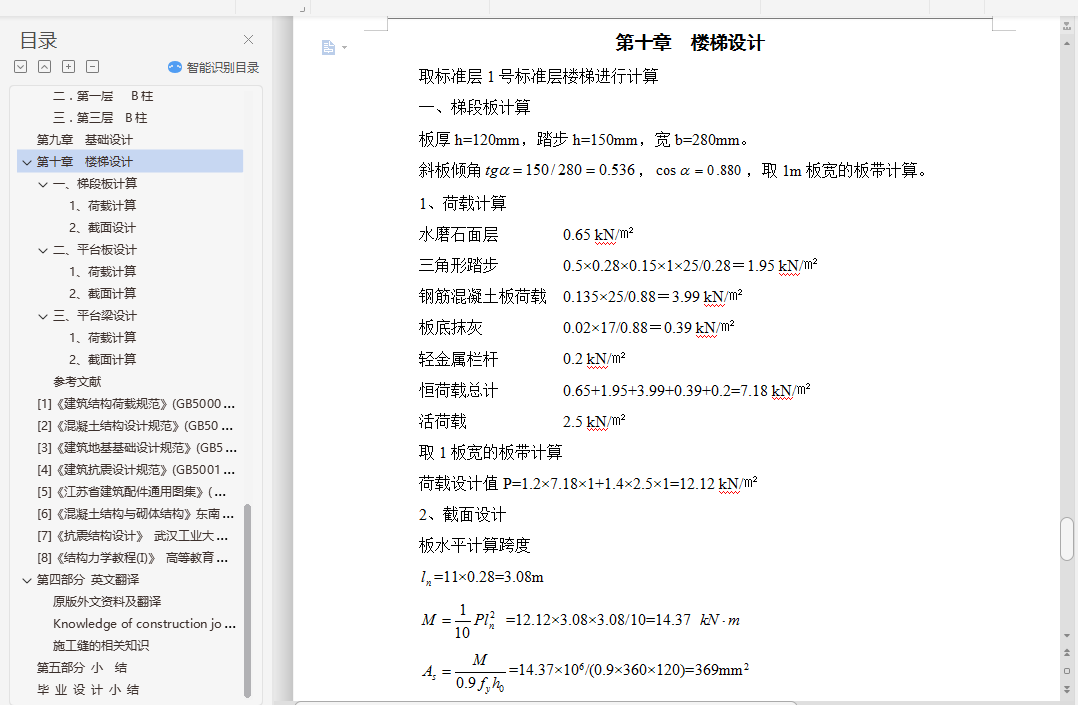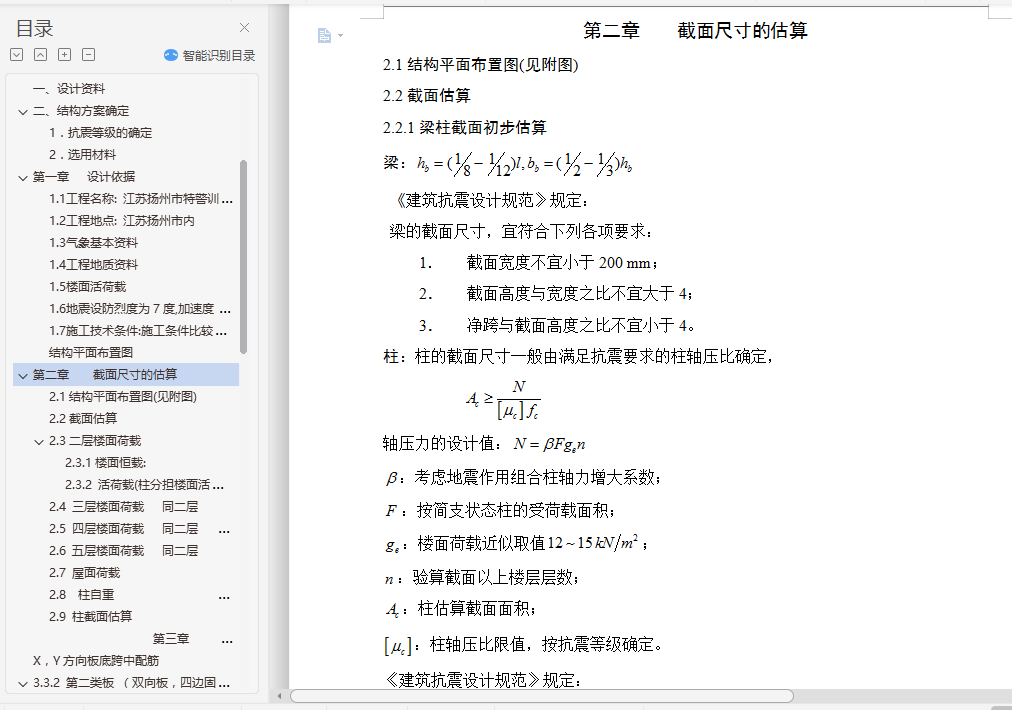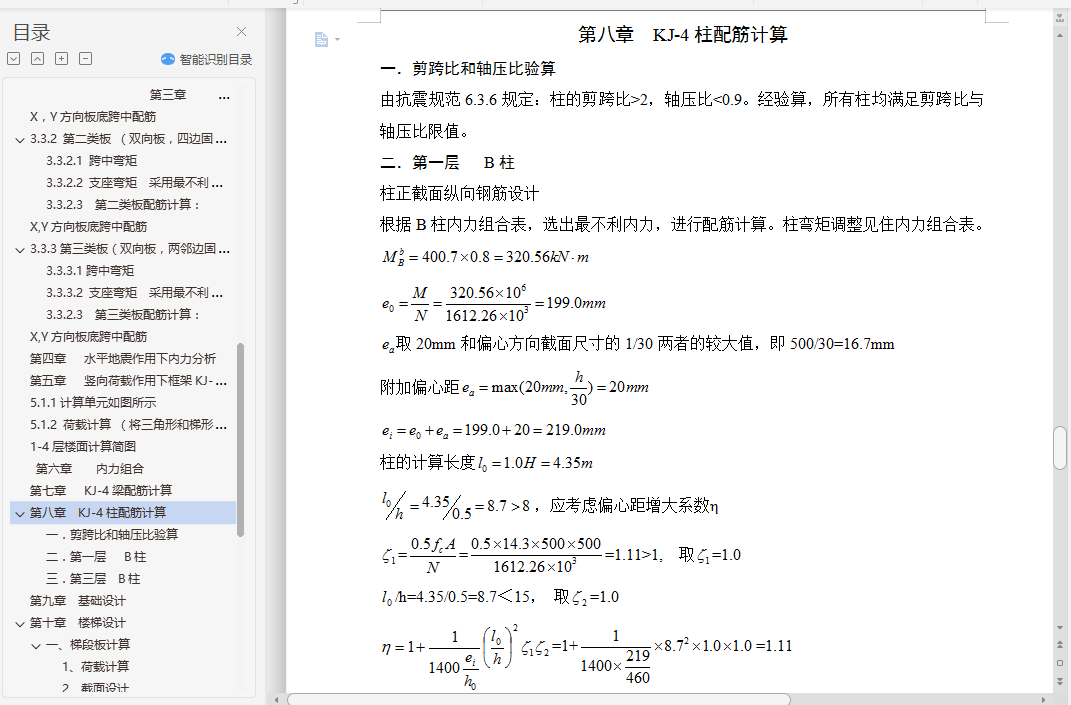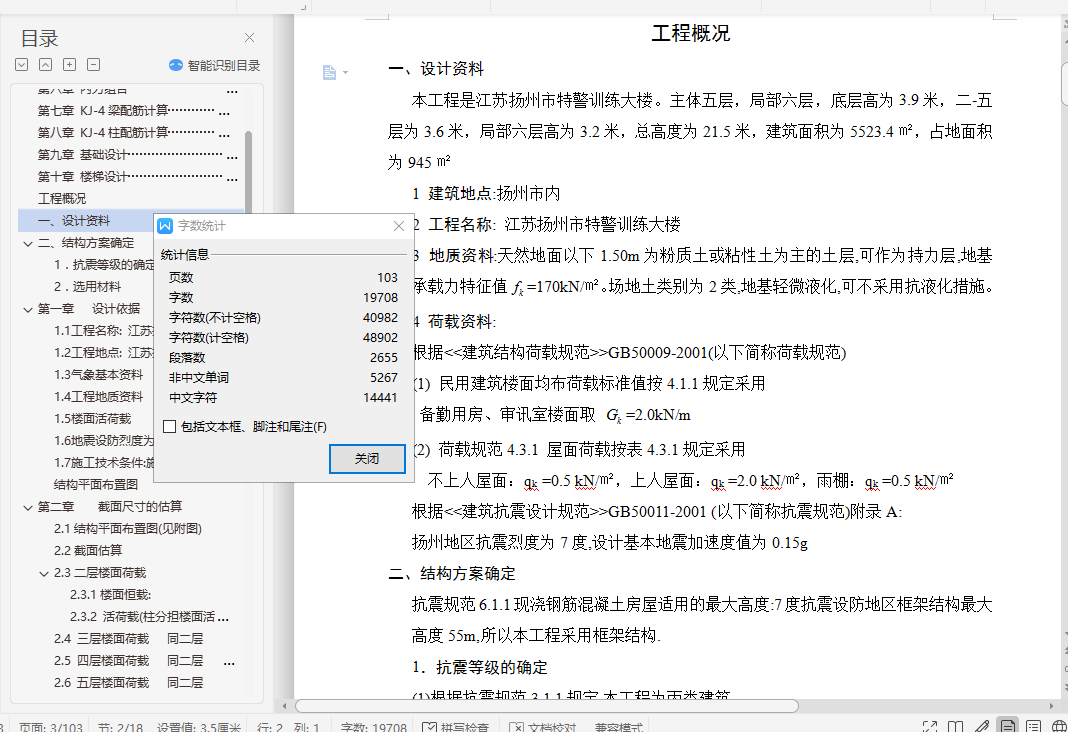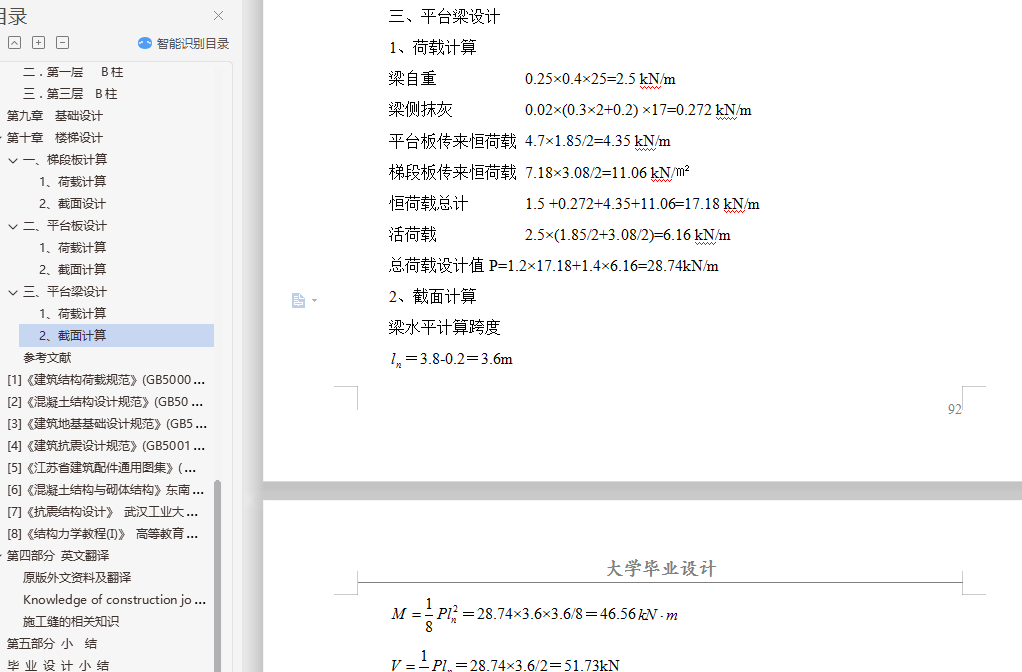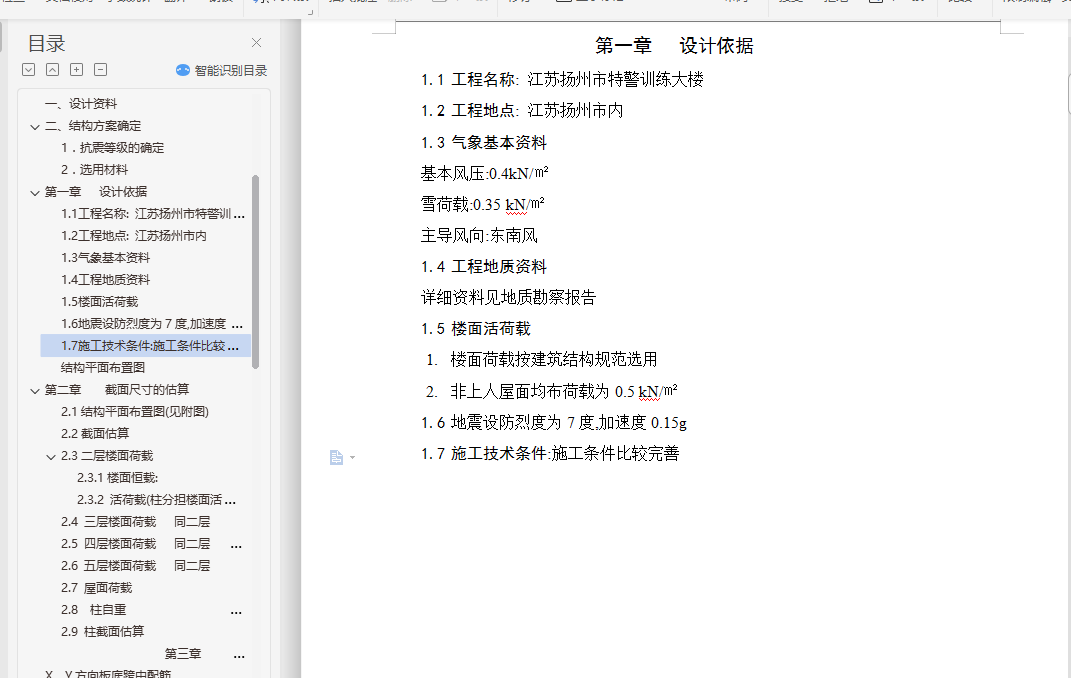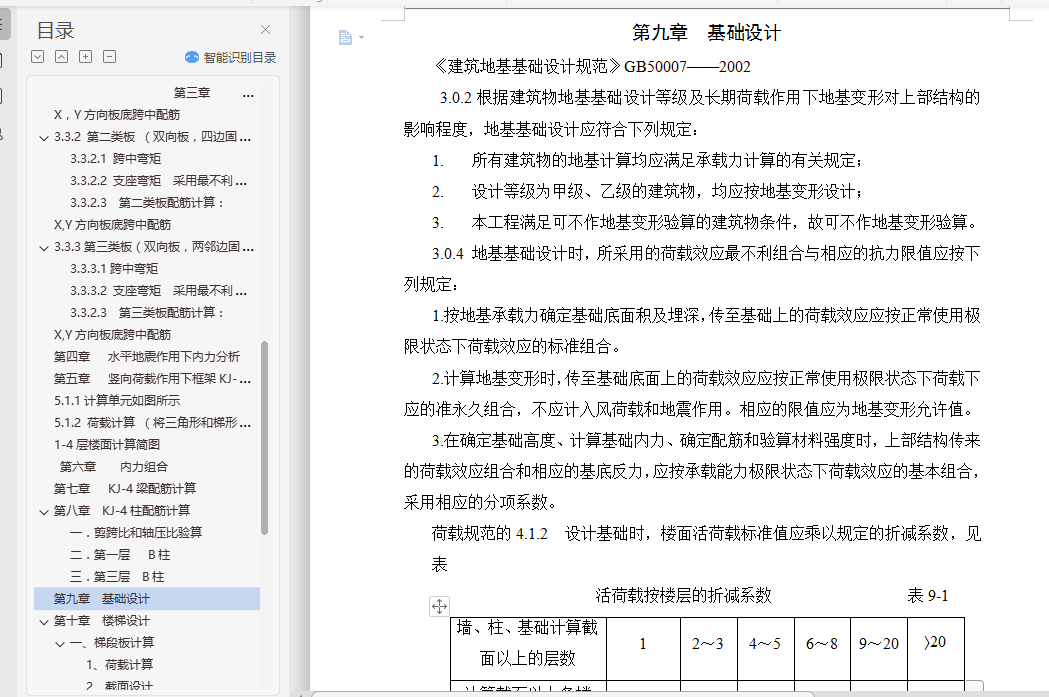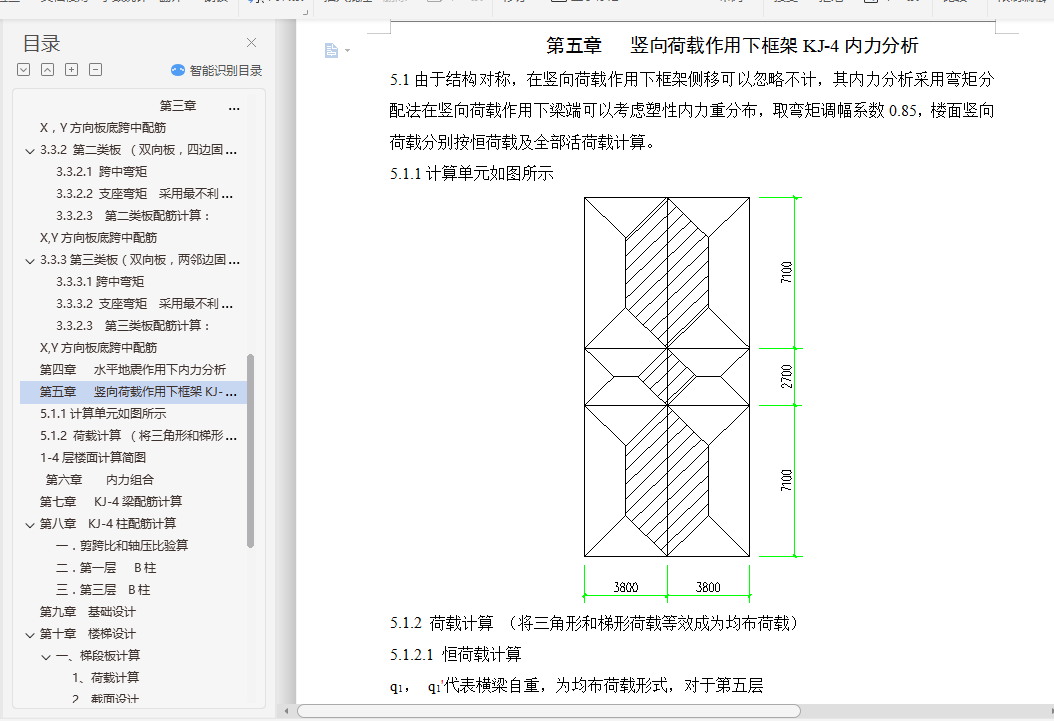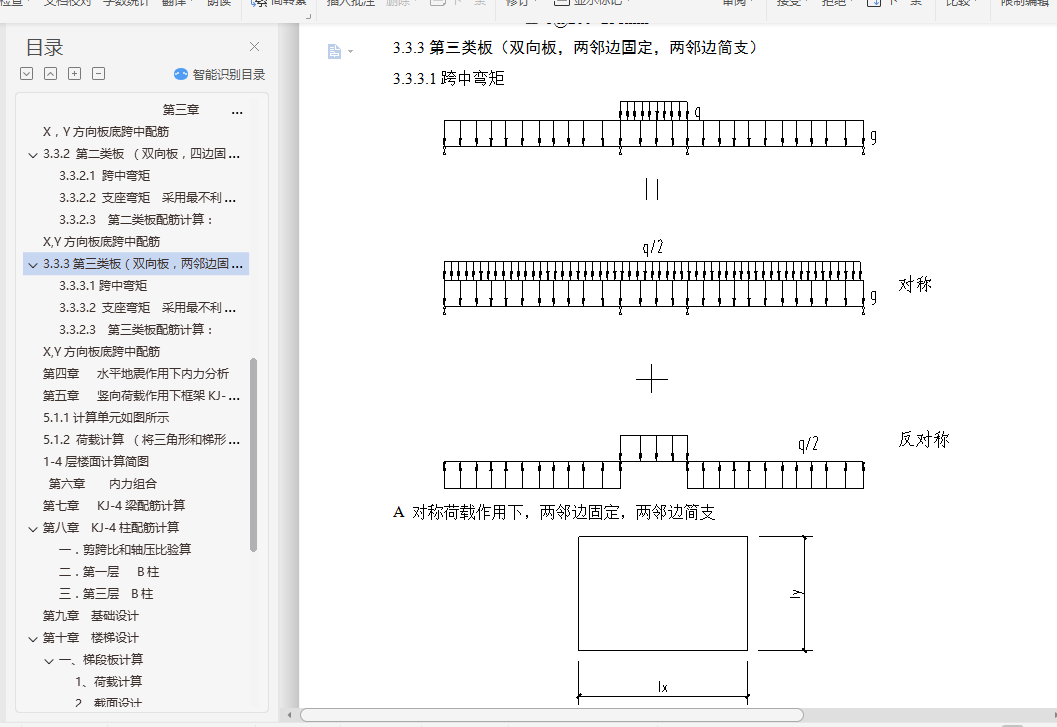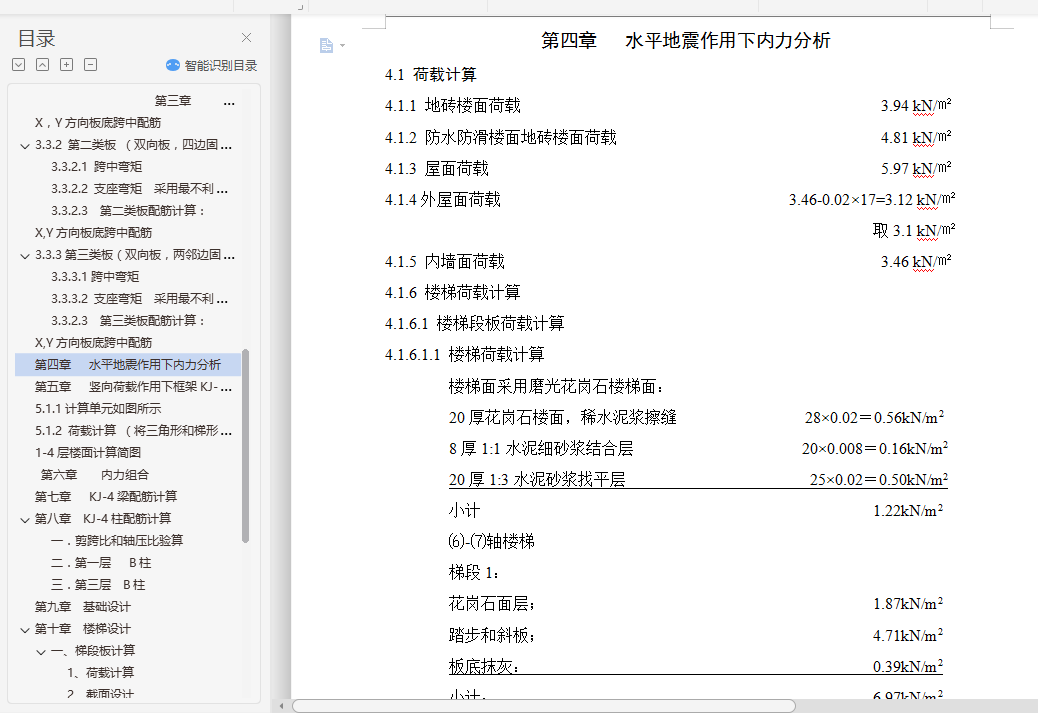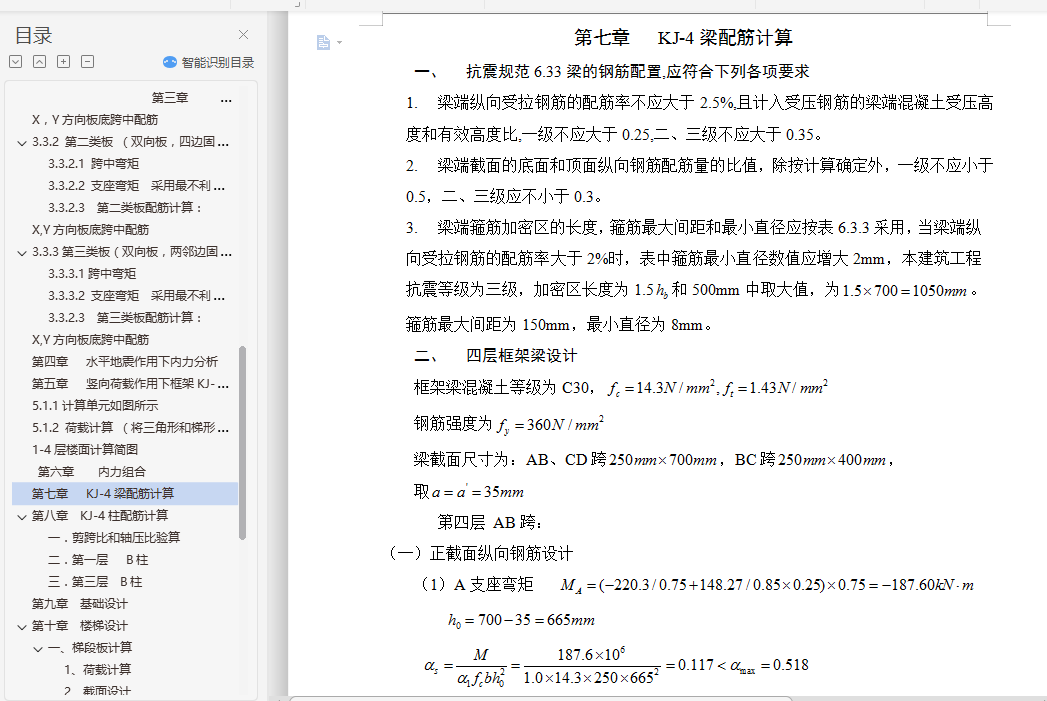摘 要
摘要:本工程为扬州市特警训练大楼,主体五层、局部六层,建筑面积5523.4m2。经过细致的方案论证,我们决定上部结构采用纵横向承重的钢筋混凝土框架结构。因为该工程抗震设防烈度为7度,所以不考虑竖向地震作用。在用底部剪力法求出水平地震作用后,利用D值法完成了水平地震作用下的一榀框架的内力组合计算。采用弯矩二次分配法分别完成了恒载和活载最不利布置作用下的内力计算。接着进行结构构件的地震作用效应与其它荷载效应的基本组合及无地震作用效应与其它荷载效应的基本组合两种情况,对框架内力进行组合,得出框架梁柱的控制内力,进而完成了梁柱截面的配筋计算。进行了条形基础的计算及楼梯的计算。用天正、CAD、PKPM软件绘制本工程建筑和结构施工图。
关键词: 地震;框架结构;二次分配法;荷载内力组合;截面设计
Abstract:This works for the Yangzhou City Special Police Training Complex, the main five-story, local six-storey building area 5523.4m2. After detailed plan demonstration, we decided superstructure length and breadth to the loading of reinforced concrete frame structure. Because the project seismic intensity of 7 degrees, so I do not consider the vertical earthquake. Obtained at the level with the bottom of the seismic shear method, the use of D value method under earthquake actions completed a combination of computing the internal forces Pin framework. Moment Distribution Method were used to complete the dead load and live load under the most unfavorable arrangement of the internal force calculations. Then the structural components of the seismic action effects and other basic combination of load effects and no effect of seismic load effect with the basic combination of other two cases, the combination of the framework of the internal force, internal forces obtained control of the framework of beams, and then completed a beam Column cross-section of Reinforcement. Were strip-based calculation and the calculation of stairs. With Tengen, CAD, PKPM software to draw the architectural and structural engineering drawings
Keywords: earthquake; frame structure; double-moment-divided method; load effect combination, section design
目 录
工程概况……………………………………………………………………………………13
第一章 设计依据………………………………………………………………………… 14
第二章 截面尺寸估算…………………………………………………………………… 16
第三章 二层楼面梁板计算……………………………………………………………… 21
第四章 水平地震作用下内力分析……………………………………………………… 34
第五章 竖向荷载作用下框架KJ-4内力分析………………………………………… 56
第六章 内力组合………………………………………………………………………… 81
第七章 KJ-4梁配筋计算……………………………………………………………… 83
第八章 KJ-4柱配筋计算……………………………………………………………… 88
第九章 基础设计……………………………………………………………………… 94
第十章 楼梯设计……………………………………………………………………… 104

